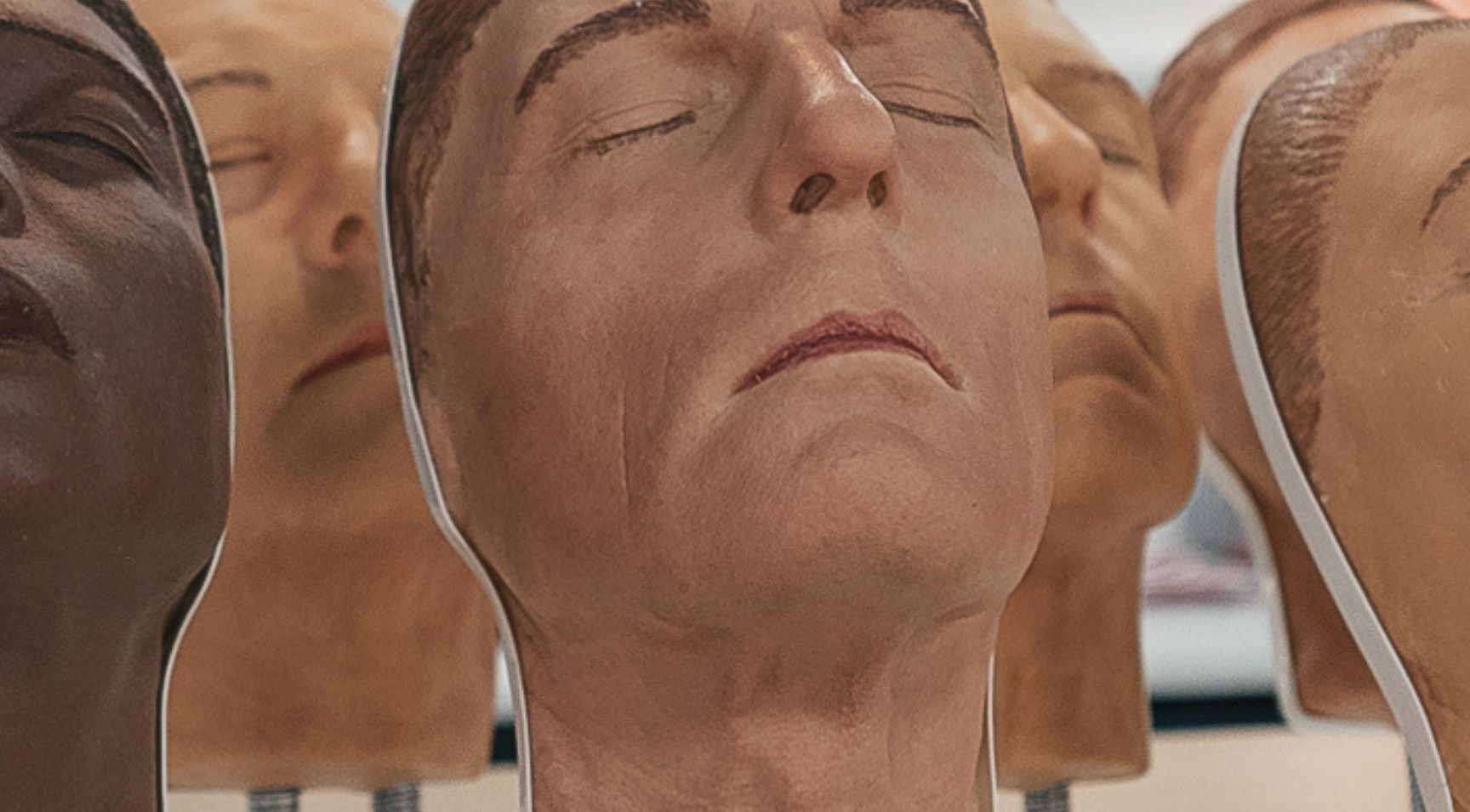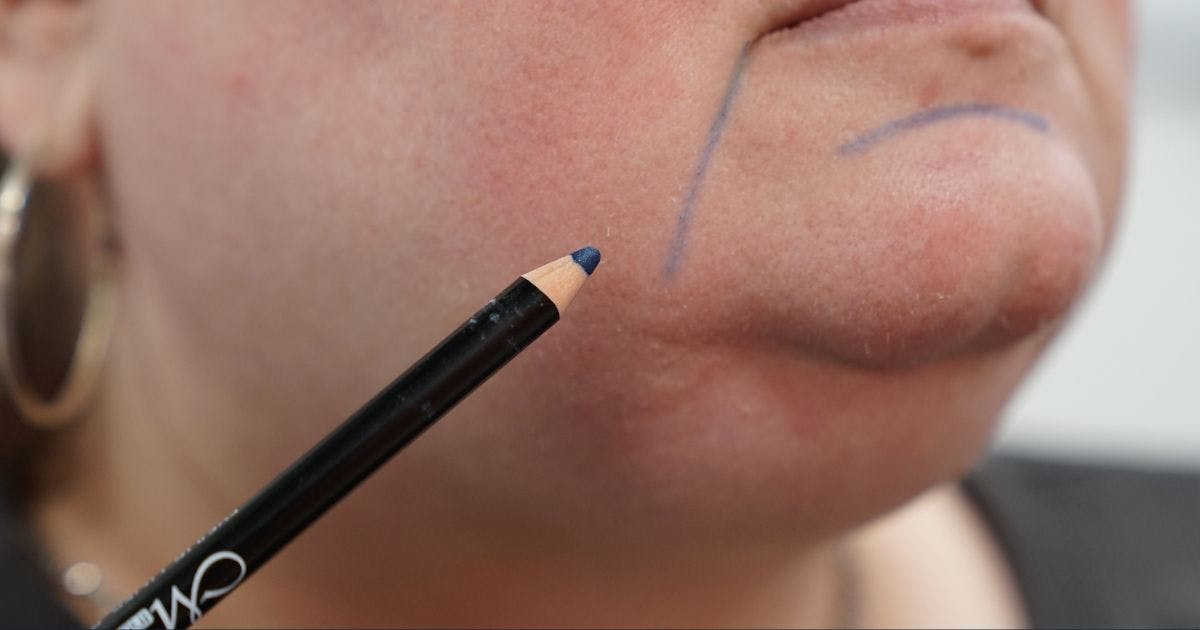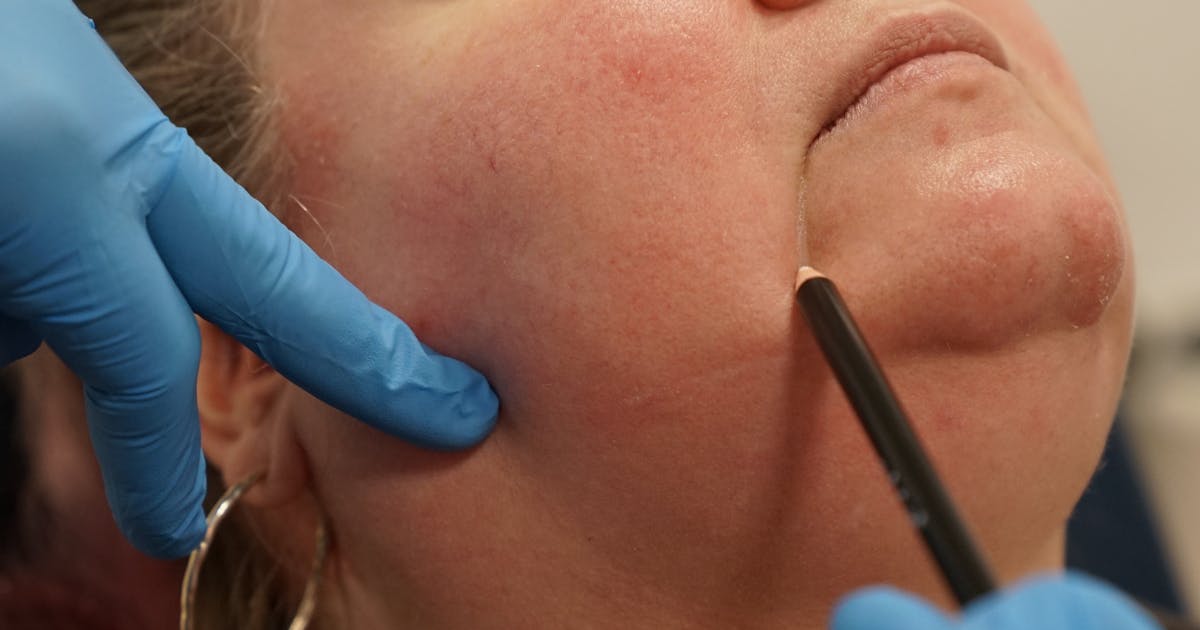How to Treat Marionette Lines: Filler Injection Techniques

Clinical trainer and aesthetics specialist, Dr Lindsay Jones shares how to treat marionette lines, plus her top filler injection techniques.
Marionette lines are folds that form at the corners of the mouth towards the jawline – “anatomically, the labiomandibular fold,” Dr Lindsay notes.
Patients frequently confuse them with nasolabial folds so always discuss their concerns fully to ensure you’re treating the right area!

What causes marionette lines?
“Marionettes are a result of age-related changes that cause the tissues in the mid and lower third of the face to descend inferior-medially against the mandibular ligament,” Dr Lindsay states.
She advises that these age-related changes include:
- “Bone resorption in the medial maxilla, the gonial angle, piriform fossa, the anterior mandible and prejowl sulcus
- “Fat atrophy in deep medial cheek, deep lateral cheek, buccal and deep mental fat pads
- “Fat atrophy in the subcutaneous superficial lateral-temporal cheek, superficial medial and middle cheek, and superficial pre-mental fat pads
- “Fat hypertrophy of the superficial nasolabial and jowl fat
- “Dermal atrophy, laxity and pigmentation resulting in lines, wrinkles, textural changes and age spots.”
- “This results in the jowl area behind the mandibular ligament appearing fuller. It also causes the marionette site in front to appear sunken relative to the jowl fullness. This creates the characteristic aged appearance with widening in the lower face.”
Best filler injection techniques for marionette lines
“As the mid-face has an impact on the lower face, it’s important to address any ageing there before tackling the lower face,” Dr Lindsay emphasises.
Treating the mid-face
“The principles of treating from superior to inferior, deep to superficial and lateral to medial can aid in treatment planning. You should always base this on an individual patient’s needs and budget.”
When to treat the marionette lines directly
“Once the mid and lateral face are rejuvenated, then you can focus directly on the marionette folds. Using the principle of deep first, I’d examine if the chin required projection and if the prejowl sulcus required revolumisation. These areas need supraperiosteal placement of a firm filler to replace the bone and fat loss in the deep tissues.
“If the marionettes were still present, I’d then treat in layer two using a cannula to fan a medium product. I’d inject from the corner of the mouth to the mental crease to revolumise the subcutaneous fat.”
Tailoring treatments based on gender presentation
Dr Lindsay states that for gender differences, “there are no distinctions in injection technique apart from respecting gendered chin appearances.
“In Western culture, a more angular look is considered attractive in men, so completely getting rid of folds can be less appealing. For women in Western culture, a smooth shadow-free appearance is generally considered more attractive.
“Where a labiomental fold is too deep, the discussion and referral for a surgical facelift may be more appropriate.”
Which tools injectors need to effectively treat marionette lines
“When taking a multi-layer approach, as an aesthetics practitioner, you may need to use different products. This is because the superficial layers tend to be more mobile, requiring a lower G prime product compared to the deeper layers.
“When using a high G prime product for the deep tissues, supraperiosteal blouses can be placed. You can inject with the needle that comes with the filler. This is usually a 27g needle for thicker and firmer products.
“For cannula work, we recommend a 25g or bigger. This is due to the risk of blood vessel puncture with smaller gauge cannulas behaving like needles in the tissues.
“A 38mm cannula is long enough to treat the whole labiomandibular fold and labiomental crease for most patients,” Dr Lindsay notes.

Filler recommendations for treating the marionettes
Dr Lindsay asserts, “There are many filler brands licensed for use in the UK. Each pharmaceutical company will have representatives that can guide you in choosing appropriate products for the deep and superficial treatments.”
The area around the mouth is dynamic, therefore, a soft product that mimics the tissue here is ideal. Your product choice also depends on how much volume needs replacing, skin quality and the severity of your patient’s marionette lines.
You can read more about choosing the best filler types for each treatment area in our interview with Dr Victoria Russell.
How to avoid common mistakes mistakes new injectors make
Dr Lindsay warns, “The most common mistake I see new injectors make is not stepping back and assessing the whole face.”
Whole face assessment
“Patients may come in and request marionette line treatment. It’s our job as practitioners to educate them on the ageing process and treat their faces holistically. This means discussing treatments to the mid and lateral face which they may not have considered. Only treat the marionettes once these areas have been rejuvenated first.”
Overestimating fillers’ ability to lift
“The second most common mistake I see aesthetics practitioners make is overestimating the lifting capability of fillers. Depending on the patient’s concerns, redirecting them to surgical options may be more appropriate.
“Overfilling the face in pursuit of “lift” leads to poor aesthetic outcomes. Patients may end up with puffy moon-shaped faces or exaggerated cheeks and jawlines.” This is also referred to as “pillow face” by patients.”
Not assessing the chin
“Finally, the last mistake I see is injectors not assessing the anterior projection of the chin appropriately. A forward-projected chin can create a forward tension on the labiomandibular fold. This can help its appearance in the same way that lateral revolumisation does, so don’t forget the chin!”
Master mid and lower face filler treatments
Treatments such as marionette lines may require a layered approach. As Dr Lindsay mentions above, for some patients, surgical intervention may be a better option. Having this understanding and ability to assess patients for optimal results and advise them is crucial.
Our Level 7 Diploma in Botox and Dermal Fillers offers you the training to become a safe, ethical and effective injector. Not only will you gain the confidence to assess and advise patients, but you’ll also learn the best injection techniques for botox and filler treatments.
For a tailored approach to injecting, we run Injectables Masterclasses that concentrate on specific areas. If focused training is what you’re after, our Cheek, Mid-Face & Lower Face Filler Masterclass may be the best option for you. Here you’ll learn to effectively sculpt and contour the cheeks, mid-face and lower face. You’ll also get hands-on experience with three of your own patients.
Dr Lindsay advocates for treating marionette lines using careful consultation and examination. Furthermore, she emphasises that the solution is not a single modality. We discuss taking a more holistic, topical approach to managing marionette lines in an upcoming interview…
All information correct at the time of publication
Download our full prospectus
Browse all our injectables, dermal fillers and cosmetic dermatology courses in one document
By submitting this form, you agree to receive marketing about our products, events, promotions and exclusive content. Consent is not a condition of purchase, and no purchase is necessary. Message frequency varies. View our Privacy Policy and Terms & Conditions
Attend our FREE open evening
If you're not sure which course is right for you, let us help
Join us online or in-person at our free open evening to learn more
Our Partners












STAY INFORMED
Sign up to receive industry news, careers advice, special offers and information on Harley Academy courses and services

